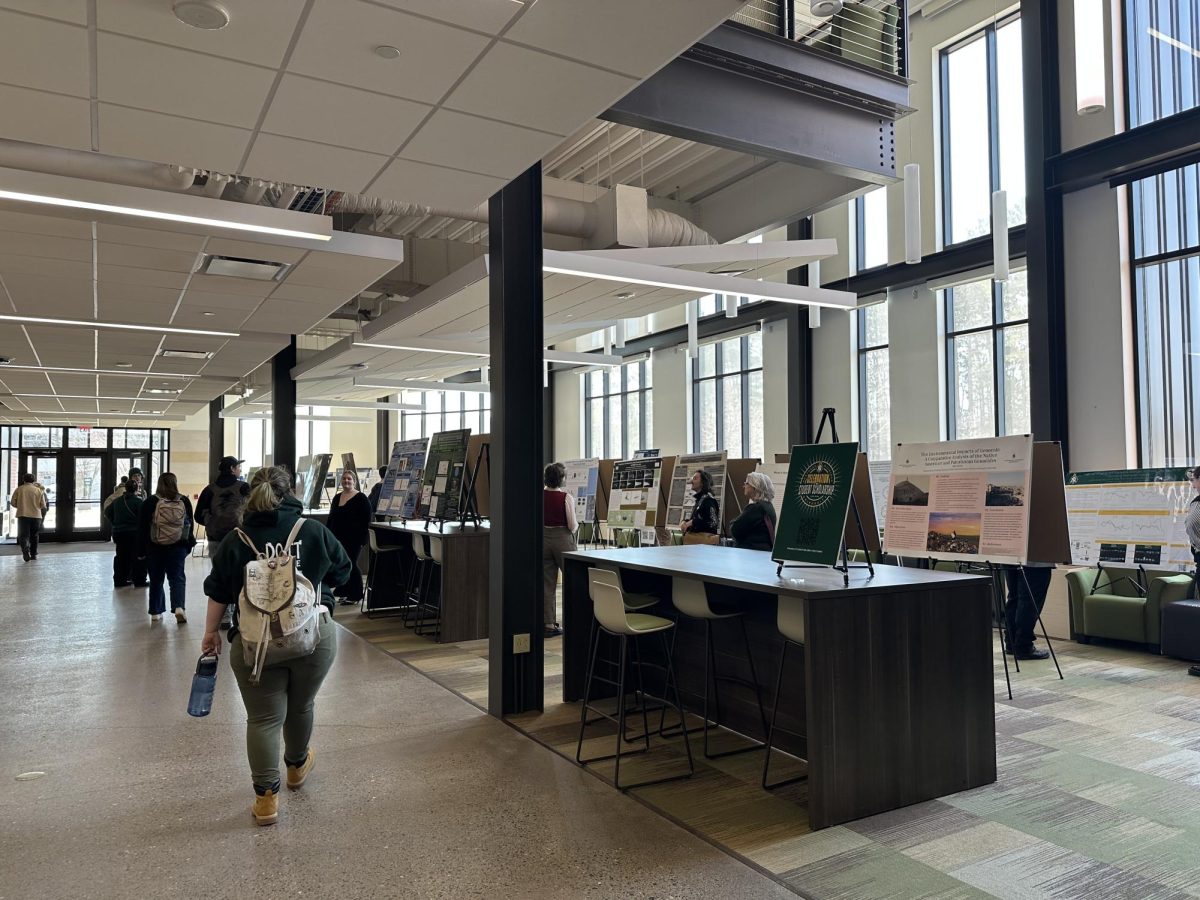With the Eagle Mine in north Marquette County beginning production in late 2014, the City of Marquette, Marquette County Road Commission and Lundin Mining, owners of the Eagle Mine, have been exploring how to handle the truck traffic that will result from the mine’s operation.
Following the EPA’s decision in January to forbid the building of County Road 595 in west Marquette County — which would have created a 22-mile stretch of road directly from the Eagle Mine to the processing mill in Humboldt Township — Marquette County officials have been deciding the best course of action to haul materials from the mine.
“One of the things with [CR] 595 was that it did not impact the traveling public and any property owners and residents,” said Jim Iwanicki, engineering manager for the Marquette County Road Commission. “Using the existing roads, it’s a 60-mile route from the mine site to the processing plant, where CR-595 would have been about a 22-mile trip from the mine to the processing plant.”
However the use of existing routes will put a large strain on the involved roadways, which will include the AAA road near Big Bay, CR-510 and CR-550, as well as Sugarloaf Avenue and Wright Street on NMU’s campus.
“The reason they’re wanting to upgrade the roads is that right now, we call them seasonal roads, which means that in the spring time, we put weight restrictions on them,” Iwanicki said. “They are not built, when the ground is soft, to be able to support heavy truck traffic. So since (Lundin) wants to haul loads year round, they’ve offered to upgrade those public roads that are not up to that standard.
“It’s one of those things where they don’t have to provide money to upgrade the road system, they’re doing it voluntarily.”
The proposed upgrade, however, presents a safety concern for NMU students, administrators and Public Safety officers.
“At this point, the biggest concern is not necessarily the trucking route or that it’s coming from the mine, but safety,” Abby Roche, vice president of ASNMU, said. “We have to be realistic about it — the route is going to happen and we’re just figuring out the safety concerns at this point.”
Roche said she and other members of ASNMU are meeting bi-weekly with administrators to stay updated on the new route and to create a united front from which to focus on student safety.
“We’re keeping good communication, it’s a united front on that level,” she said. “What we do is going to happen through the people in Cohodas [Hall]. They have a lot of the same views as us and will help us out.”
According to Art Gischia, senior associate vice president for administration, NMU’s position on the truck route weighs heavily on the safety of students at the Sugarloaf Avenue and Wright Street intersection, as well as the impact of traffic noise on the residence halls on Wright Street.
“It’s an interruption of general student life,” he said “If you live in those residence halls and that truck traffic is running 24 hours a days, there isn’t a place in the state of Michigan that an owner of apartments or housing wouldn’t say something.”
Gischia added that he and the administration are working cooperatively with both local government and ASNMU members to make the transition to the trucking route — which Gischia said is inevitable at this point — as smooth and safe as possible for NMU faculty, staff and students.
“We’re on the same wavelength (with ASNMU),” Gischia said. “We need to have a unified and consistent message coming from the university that safety is our number one concern.”
The proposed route will increase the flow of traffic by around 100 large hauling trucks on CR 510, CR 550, Sugarloaf Avenue and Wright Street.



























Jeffery Liman • Oct 2, 2013 at 7:16 pm
Unless you’re a 13 semester senior you probably weren’t attending NMU when the Mayor of Marquette call the proposal to haul mine ore through Marquette streets “a deal breaker” and otherwise unacceptable. Rio Tinto said they’d build a new road and go around Marquette. That didn’t happen. Don’t be fooled and believe that “tree huggers” or the EPA prevented that new road from being built. That’s the story Rio Tinto created to get out if building a $200 million road and haul ore through your campus. That’s how they operate. Blast a hole in an Indian sacred site (Eagle Rock) to take the attention off of the real problem – water pollution. No mine puts the mine portal over a mile from the ore body and tunnels through a big rock out crop and turns 180 degrees like they did at Eagle. But that took the attention away from water pollution. When it’s all said and done – the Western half of the UP will be a moon scape. Unless we get off our cushions and fight this regulatory fiasco with everything we’ve got!
Catherine Parker • Sep 27, 2013 at 1:07 pm
Rio Tinto committed to helping the City deal with truck traffic. As its successor, Lundin should do the same.
And I have to correct Jim Iwanicki: Property owners/residents would have been affected by 595. There are homes and cabins along that route.
Mike • Sep 27, 2013 at 9:52 am
The EPA did not “forbid” the building of County Road 595, they found the DEQ permit unacceptable under the Clean Water Act. There was the option at mitigating at a higher rate but the county (and Eagle Mine) did not find it economical to mitigate at a higher rate.